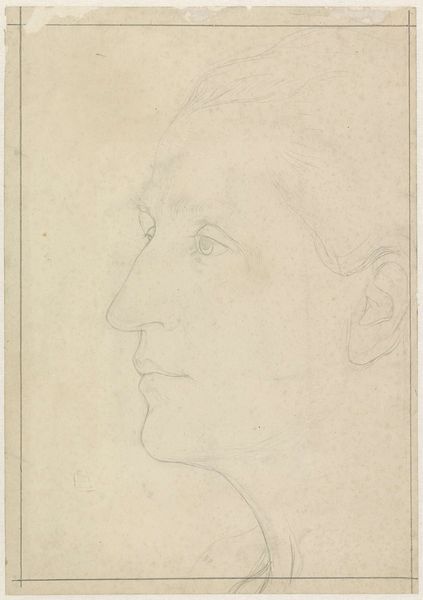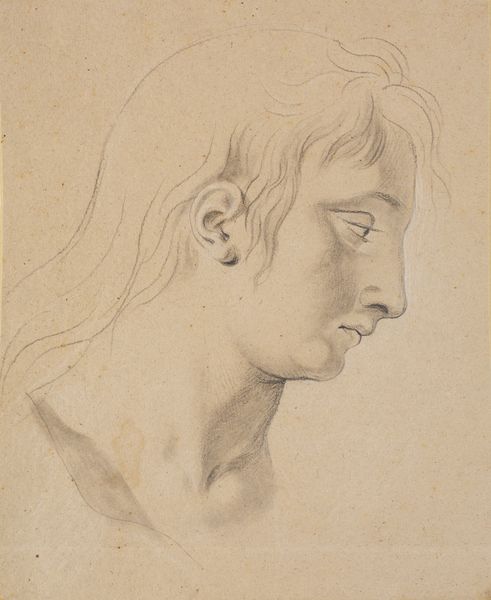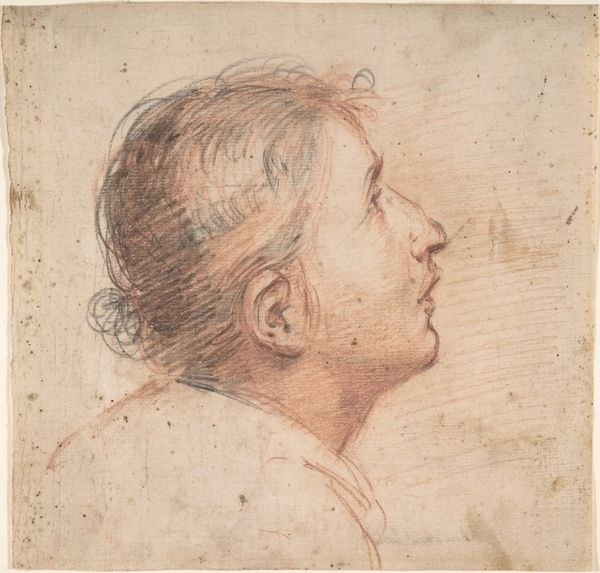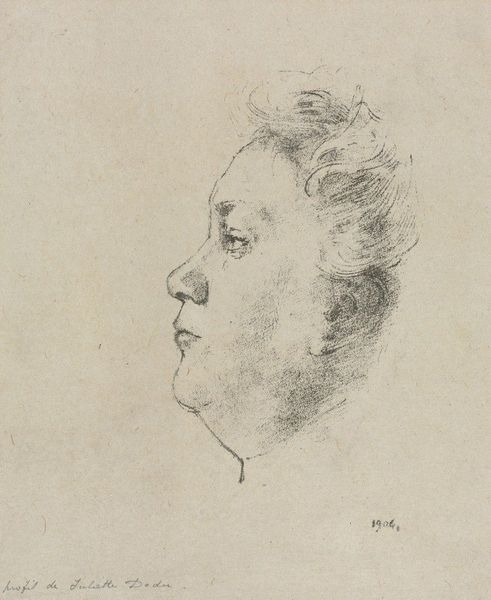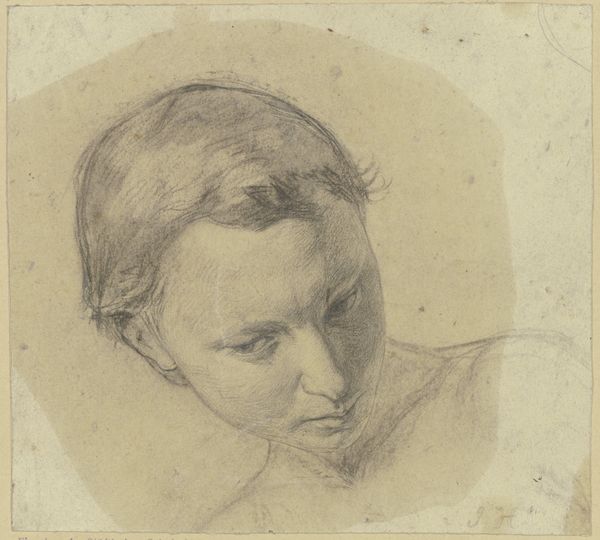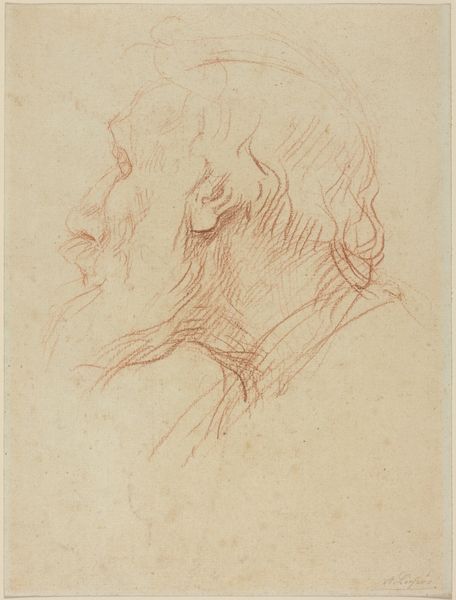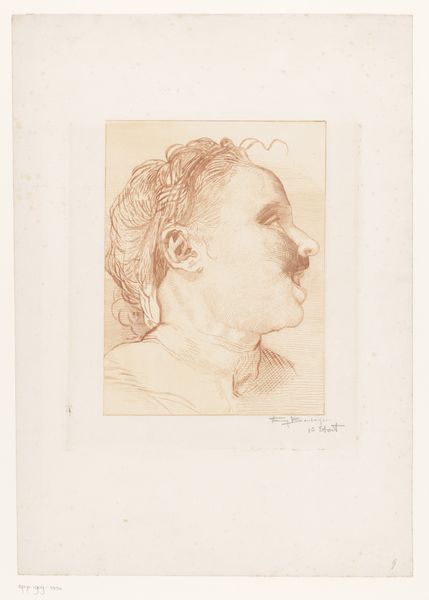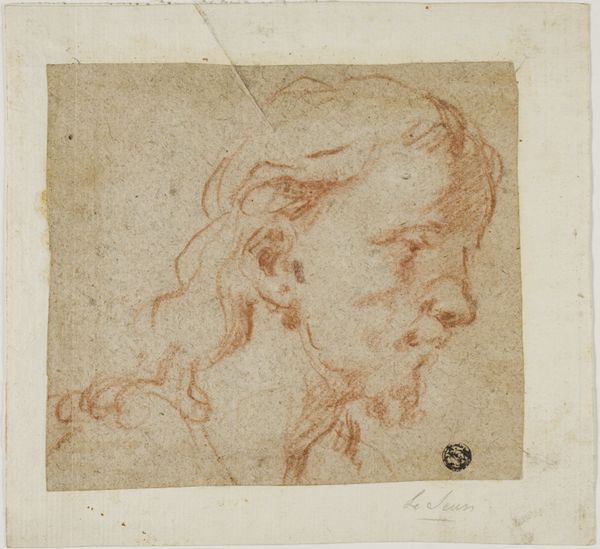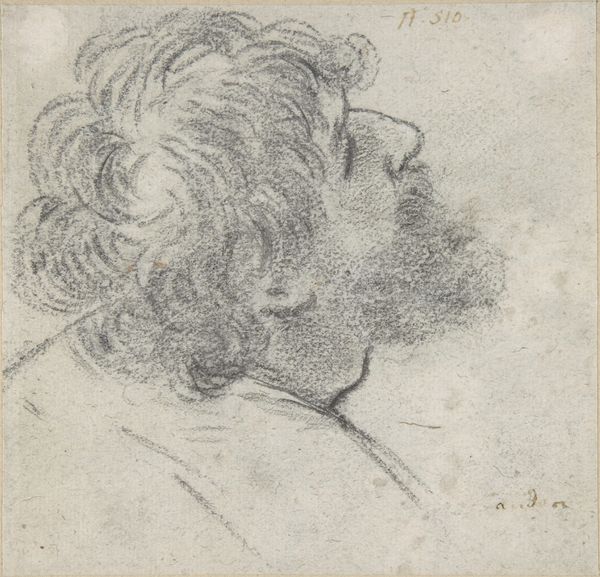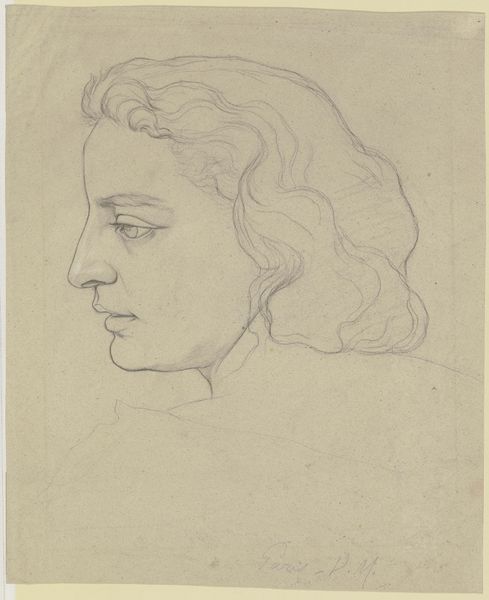
drawing, pencil
#
portrait
#
pencil drawn
#
drawing
#
amateur sketch
#
toned paper
#
facial expression drawing
#
light pencil work
#
pencil sketch
#
figuration
#
form
#
portrait reference
#
pencil drawing
#
pencil
#
line
#
portrait drawing
#
pencil work
#
academic-art
#
realism
Dimensions: height 86 mm, width 87 mm
Copyright: Rijks Museum: Open Domain
Editor: Here we have "Opziende manskop, naar rechts," a pencil drawing, likely from between 1770 and 1825, by Simon Andreas Krausz. It's a profile of a man looking up and to the right. I’m struck by its simplicity, but also how intensely the artist captures the face with so few lines. What stands out to you when you look at this drawing? Curator: Well, considering the period, drawings like these served a specific socio-political function. This wasn’t just art for art’s sake. These portraits, often quick sketches, were part of a larger visual culture that affirmed status. What do you notice about his features? The slight upward tilt of the head? Editor: Yes, I see that, and the faint suggestion of curls in his hair, maybe even a powdered wig, seems to point to status too. But it also feels like an intimate study, almost like a captured moment of private contemplation. Curator: Exactly! It exists in this interesting intersection. On one hand, it conforms to the conventions of portraiture aimed at representing societal elites. But consider the role of academies at the time, their impact on artistic production, and their accessibility to individuals, with implications for social mobility. To what extent does this sketch both affirm and potentially challenge existing power structures through portraiture? Editor: That’s a great point. The sketch, even though skillful, seems more accessible, less formally rigid than a commissioned portrait. It might hint at emerging middle-class aspirations in art. Curator: Precisely. These "minor" works, like drawings and prints, circulated more widely. So, how might their accessibility influence our understanding of public perceptions during this time? Editor: I never thought about this from a societal perspective; I have always focused on pure aesthetics. I am going to look at art very differently from now on! Curator: Excellent! This art offers unique insights into both personal representation and broader social changes. It also inspires us to delve into more intricate connections between them.
Comments
No comments
Be the first to comment and join the conversation on the ultimate creative platform.


